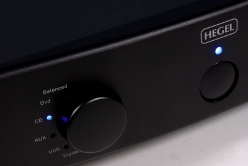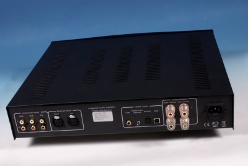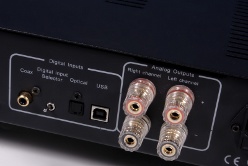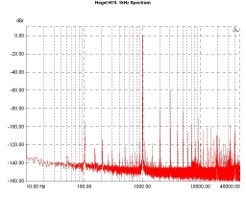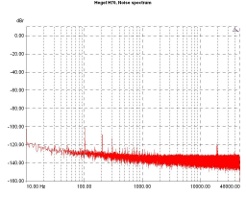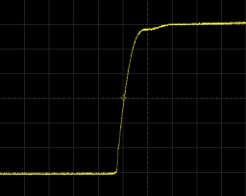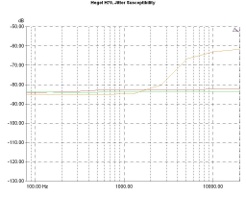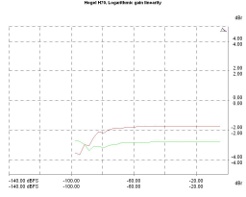Interesting Stories about Audio & Home Entertainment technologies
Last update: May 02, 2012
INTEGRATED AMPLIFIER – USB/DAC
Hegel H70

Hegel introduced H70 about two years ago, probably attempting to offer a good entry-level integrated amplifier with digital input connectivity. The amplifier is based on the biggest model (H100) and includes some of the design aspects Hegel is known of, namely the output power devices, the SoundEngine modules, good aesthetics and finish quality. That said, H70 lacks H100's display, offers fewer analogue inputs and less power. Hegel announces a capacity of 70+70W in 8 Ohm loads.
The amplifier includes four analogue inputs, one with balanced input circuitry and XLR connectors and three single ended line-ins with gold plated RCAs of typical quality. The user has access to the d/a module through two S/PDIF inputs (a coaxial and an optical/Toslink, selectable via a switch in the back panel) and a USB port capable of up to 48kHz streaming. Connected to a computer through this port, H70 appears as a USB DAC or external sound card with no additional drivers required.
The user has access to an input selector and a volume control, both offering good feeling during use. Most probably though, these basic functions will be controlled through the included small remote control.
Details
Hegel's H70 is based on a class AB power stage that uses a single pair of high current bipolar transistors from Toshiba (2SA1943/2SC5200) capable of 15 amps each. The same parts (more pairs of course) were used in bigger Hegel amplifiers like Η4Α (reviewed about 6 years ago, in avmentor.gr). The power amplifier also includes a SoundEngine module per channel. SoundEngine is a patented circuit module designed by Bent Holter (Hegel's owner and designer…) and, not quite unexpectedly, there is only little detailed information about it. Observing a block diagram published on the relevant patent paper, one could conclude that the basic idea is of local feedback loops functioning only if what is considered to be the error level is above a certain threshold, thus avoiding a global negative feedback loop. According to Hegel's description, SoundEngine technology cancels the crossover distortion inherent in class AB topologies as well as the high frequency distortion components of the amplifier. The input stage of Η70 is designed around 5532 opamps and the volume level is controlled through an Alps potentiometer. The power supply includes 4 audio grade capacitors (10.000uF). D/A conversion circuitry is design around a digital interface from Asahi-Kasei (AK 4115) and one 24bit/192kHz dac from Texas (PCM1754). Data from the USB are fed to a PCM2704 to be converted to S/PDIF format.
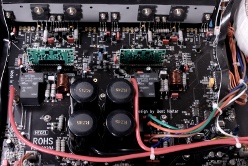 |
 |
Power supply includes 4 10.000uF caps. The vertical boards are the SoundEngine modules. |
The power stage includes a complementary pair of high current bipolar transistors from Toshiba. |
Lab Results
Using an 8 Ohm dummy load, H70 sourced up to 82Wrms per channel at 1kHz, for a 3% thd+N figure. With a 4 Ohm dummy load the measured power output was about 110Wrms per channel for the same distortion figure (1.3 times more, a performance that could be considered adequate for the size and price of the amplifier, not great though). Static thd+Ν measurements yielded to 0.017% and 0.034% for 1/3 of maximum power at 1kHz for 8 and 4 Ohm loads respectively while intermodulation distortion was measured to be 0.009% (SMPTE, 1/3 Pmax, at 8Ohm load). Signal to noise ratio was good at -79.5dBr(Α) with reference to 2.83Vrms/8Ω output.
Frequency response was smooth, well above 20kHz with a mild roll-off at very low frequencies giving a -0.8dBr at 10Ηz. The deviation of the frequency response appeared very low when Η70 was connected to a complex load simulating a real loudspeaker. Damping factor calculated to about 61 (for 8 Ohm loads), a value considered adequate. Frequency response diagrams show a difference between the two channels of about 1dB, behavior that most probably signifies the need of some adjustment for one of the channels (the unit was in demo use for some time). Since the difference was smaller than 1dΒ, we decided to proceed with listening sessions without taking any further action.
Output spectrum (1/3 Pmax at 1kHz) includes a series of harmonics, third being the dominant at about -60dBr. Noise spectrum (referenced to 2.83Vrms/8 Ohm) shows a rather silent circuit without 50Ηz hum but with some content at 100Hz (probably caused by power supply rectification) and its harmonics. All of these are between -120 and -100dBr with the relevant input being shorted. Harmonic distortion remains below 0.01% from 20Hz to 20kHz (at 1/3 Pmax/8 Ohm) in one channel with the second channel slightly higher in percentage and with a tendency to rise more above 10kHz. The shape of the thd+N Vs power curve follows the usual trend with distortion's lowest values being between 10 and 20Wrms/8 Ohm. Overload starts at about 65Wrms/8Ohm. H70's power stage appears to be quite fast. Rise time was measured at 1.47uS (1kHz square wave at 8 Ohm, maximum voltage output) and the slew rate was about 48.4V/uS.
Listening
First impressions of H70 was that of a polite and smooth sounding amplifier, great for long listening sessions and one that possesses adequately neutral character. The soundstage appeared with good dimensioning, wide and with a good perception of depth. Localization of sources was good enough and the listener will always have a fair perspective of the mix.
The amplifier appeared to be a little restrained at the very low end, where the synth sounds of a soundtrack sometimes resides, but the rhythm section, drums and bass instruments was reproduced accurately, offering a sense of good pace. Mid band, including winds, strings and voices, was enough smooth and warm, just to give the amplifier the politeness described above, but not beyond a certain limit, so they are not offering the impression of an over-engineered sound character. Highs were detailed, but also smooth giving the impression of a slightly longer attack but quite good sustain and release times.
While H70 is not a high powered amplifier, it proved to have good driving capabilities, even with the rather low sensitivity ATC SCM-50s used during the majority of listening sessions. Therefore, it appears that H70, accompanied by a loudspeaker of reasonable sensitivity, could be used in small and medium volume listening rooms with good results. As the power stage approaches overloading, H70's behavior changes gradually to a more compressed (but not extremely harsh) character, nevertheless enough to warn the user about reducing listening level.
H70's sound attributes did not change drastically during listening through its digital inputs. Although the 16/48 USB port is a little bit restricting (not allowing for high resolution files to be played back directly), it is obvious that dac is quite good offering detailed soundstage, the feeling of air in the upper high frequencies and -additionally- well controlled and dynamic bass, lacking at the same time any digital harshness or similar attribute of negative nature. Therefore, given an outdated disc player, the digital inputs of H70 are a positive upgrade and gives to any novice a chance to introduce him/herself to the files playback realm.
Conclusion
Given its modest price, H70 offers quite a lot: good connectivity including digital inputs and a USB port, adequate power with good drive capacity for small and medium sized listening rooms, good build quality and a carefully designed, not intrusive sound character. A starting point that makes sense for anyone looking for a good amplifier to setup a small but good sounding system.
Equipment used during listening sessions:
Linn Sondek LP12/Ittok LVII/Karma, Rotel RHQ-05, Teac Esoteric P70/D70, Nirvana DC-110, dCS Puccini U-Clock, Melos Plus Series Line, Copland DRC-205, Parasound HCA3500, ATC SCM-50PSL
Hegel H70
| Specifications (Data according to the manufacturer | |
|---|---|
| Description: | Integrated amplifier with USB/DAC |
| Output Power: | 2x70Wrms/8 Ohm |
| Frequency response: | 1Hz-100kHz |
| S/N: | >100dB |
| Distortion: | 0.0055 (50W/8 Ohm) |
| Inputs: | 3x single ended (RCA), 1x balanced (XLR) |
| Digital inputs: | 1x coaxial (RCA), 1x optical (Toslink), 1x USB (16bit/48kHz) |
| Outputs: | 1x Loudspeaker binding posts |
| Dimensions: | 430x415x80 (mm, wxdxh) |
| Weight: | 12kg |
| Price & More Info | |
|---|---|
| Hegel H70: | €1390,- (price for the Greek market) |
| More Information: | http://www.hegel.com/ |
| Review Sample | StepCom |


